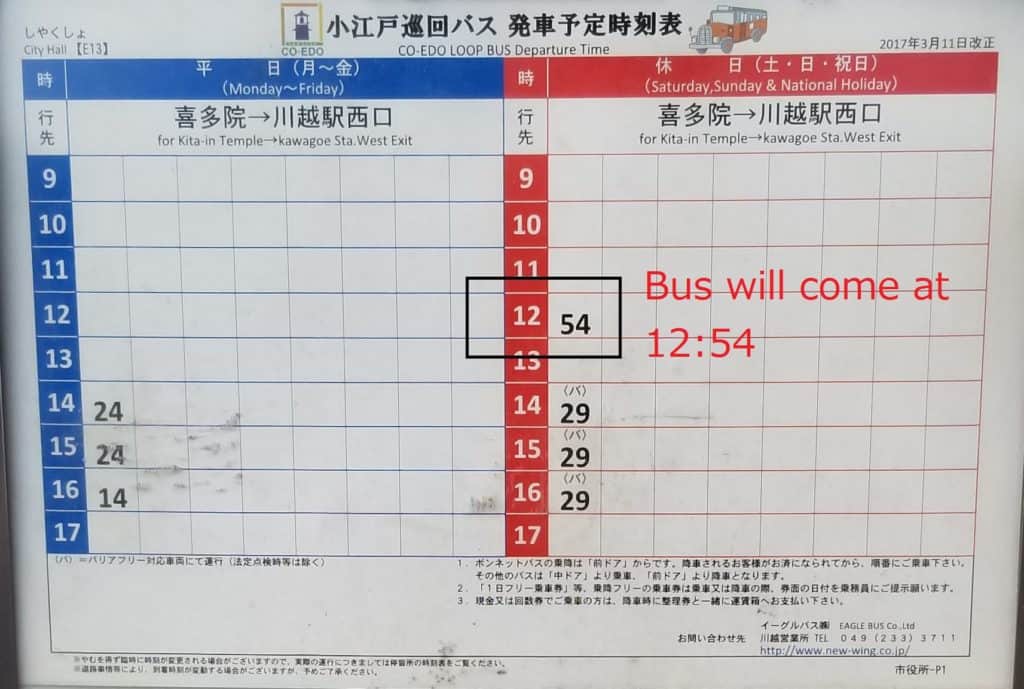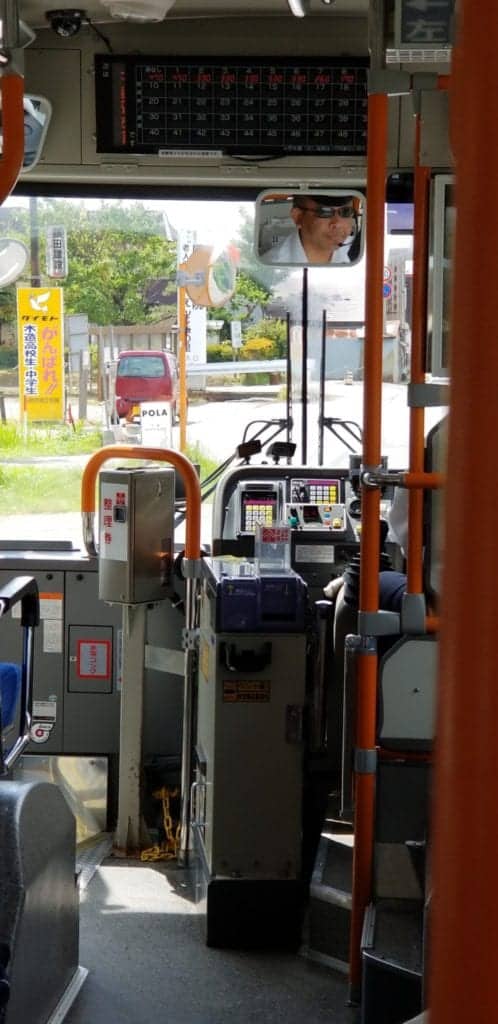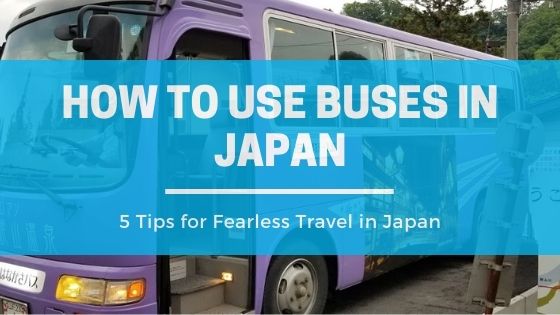As someone who never a day in her life in America rode a bus, they can be intimidating. Sure, I used the subway or metro in bigger cities, but let’s face it, America’s public transportation sucks. Generally speaking, if you are using buses in Japan, you aren’t going somewhere easy (otherwise you’d be on a train, but we’ll also touch on highway buses!). If it’s a mile away, I’ll walk, but start getting farther out, you really do need a bus. Throw in a very complicated written language, like Japanese, it’s even scarier. So here are 5 tips for using the bus that I hope helps you on your way!
[Editor’s Note: This post was originally published in October of 2018 and has been updated for freshness, accuracy, and comprehensiveness.]
Disclosure: Kristenabroad.com is a participant in the Amazon Services LLC Associates Program and other affiliate programs. For some links to products or services in this article, I may earn a small commission by you using my link. The price for you is not affected.
5 tips for using buses in Japan
The key to remember is the more practice you have, the more comfortable you will become with using buses in Japan. While kanji can make it a bit more intimidating than other places, more and more buses in Japan are becoming more foreign-friendly with English (and normally Chinese) being used for the signs.
1) How to save money on buses in Japan
Remember when I talked about Pasmo and Suica pre-pay cards? As long as you aren’t in the boonies, this is the easiest way to go. You are receiving a small discount by using them, however, if you are somewhere that doesn’t do cards and you’re near the bus depot, pay for the roundtrip (if you are only going one place), you’ll save a few dollars depending on how far you’re going!
When we took the 45
In cities, often time there is flat rates or bus passes you can get. Check at the bus station or tourist information center (my must when traveling in Japan) when you get there. A great way to get around Hirosaki and many other cities are the tourist “loop buses”.
2) How to navigate WHICH buses in Japan to use
This is the hard part. Sometimes there is a whole army of buses at the depot heading off in different directions. The best starting point is to look up where you are going. If they have a website, they usually have an “access” page. If they require a bus to get to them, you’ll be able to check which stop you are looking for, and hopefully, what bus line.
As, like trains, there are multiple different options. As far as knowing which stop it is, they are all actually named, and even farther out, they’ll have the name in English characters. If you are worried about signaling to stop though (there are usually red buttons to press), it is helpful to know what the Kanji looks like as it will appear first.
Next, it’s just a matter to figure out what “platform” or bus name to look for. Anywhere I’ve been that requires buses in Japan, I make sure to explain that in detail as I know I get stressed out by it so I want to make it as easy as possible for you! Getting to Ryusendo Caves coming to mind.
Lastly, where to get off the bus. If there was a bus terminal, they should be able to provide you with a time schedule. Though on roads, they are surprisingly close to the time expected. Yes, even the buses in Japan are punctual! If you have a phone with data (it would be nice if all transportation had WiFi!), you can also google map it to give you a better idea.
3) Reading bus schedules in Japan
There are apps for bus routes but best I’ve been able to find, they are all in Japanese. Google-san (as it’s called in Japan) is your friend and is doing a better job with including bus routes as a direction option.
For routes, remember that they can differ between 休日 (kyuujitsu, “holidays”) and 平日 (heijitsu, weekdays). 休日 you will normally see listed as “休日 (土 日 祝日)” which means “Holiday (Saturday – Sunday – National Holiday)”. In this case, 土曜, Saturday, is shortened to 土, as 曜 (day) is understood.
If time tables between week days and week ends are different, you will see one of these characters at the top of the column. They normally change the color of the column as well to make it stand out.
This next graphic is a simplistic schedule. If weekday also included a 14:44 bus, for instance, there would be a “44” in the next column from the “24”. Note that not all areas will have English like this one, so it is helpful to learn the kanji or have screenshots of what you are looking for.

4) Getting on and off buses in Japan
Generally, you’ll get on from the back door of the bus but that’s not always the case. One hint, if both doors open, use the rear one. Some queue lines are very exact and will give you an idea as well because the door will open right at the front of the line. It’s Japan, we queue for everything.
If you are using a PASMO or other IC card (if that’s an option where you are), you’ll see a PASMO sensor to tap, just tap on and off the bus. If you are somewhere that needs a ticket or to pay by cash, there will be a number dispenser. This will be used to verify where you got on (though no one will actually check it). You will see a white piece of paper out of a machine, just grab one as you are getting onboard.

In this picture above, immediately next to the driver is where you pay. Left of that is the dispenser for what stop you got on. They are in number order but don’t really refer to anything besides that. And in the overhead is the display board.
There will be a screen at the top of the buses in Japan, the price will change as you continue on the way. Watch what it is for your number and you will drop your number and the exact amount of money in the machine when you step off the bus at your destination. The machine in which you put your money also has the ability to change bills as necessary generally. However, it’s a good idea to carry lots of change if you are somewhere that requires riding buses in Japan.
5) Getting back – not missing your bus

Assuming you are returning from where you departed the bus, it’s a good idea to double check the time table. Even if you got one from the bus terminal. I generally like to get back 5-10 minutes before the bus is expected in areas where they don’t run often. They are punctual, but you never know if you might be the one running late! If you’re getting on at a different location, definitely give yourself some time to locate the bus stop to save yourself some stress.
In this example, there are three bus routes that stop at this stand. The hours are listed down the left-hand column and the minutes (in the corresponding hour) are listed in the columns per bus.
How to use Highway Buses in Japan
(At updating this article, the highway buses in Japan are currently suspended due to COVID-19 but hopefully, we can use them again soon!)
Highway buses (高速バス, kousoku bus) are often cheaper than taking the train (especially if you’d be taking the shinkansen) to your destination. They are good for medium and long distances. Many longer routes will run overnight, getting you to your destination first thing in the morning. Which works really well for getting to ski resorts, which is the instance I’ve used highway buses in Japan the most. They are also a good option if you tend to get train sick.
For long distance travel for the budget minded traveler in Japan, the overnight options can be great for you as you don’t have to worry about finding lodging – you just sleep on the bus.
You can use Kousoku Bus Net to search for highway bus routes in Japan. You can also save some money by getting one of the highway bus passes.
One of the nice things about highway buses in Japan is that there is room underneath for your luggage, but usually, you are limited to a few items. If there aren’t restrooms onboard, the bus driver will make stops along the way at the highway stations (more on those later).
To purchase your tickets, head to the bus station (normally co-located with train stations, but can have separate hubs like in Iwakuni). You can also purchase them from kiosks in convenience stores.
Pin this for later
Personally, I still don’t like buses. I much prefer trains and walking (got to rank up my steps with my Garmin Fenix 6S after all!). However, it’s a necessary evil sometimes. Hopefully, this helps put your mind at ease a bit while traveling around Japan. There’s also this thing called highway buses in Japan, which I would liken to greyhound buses in the states, that will be a different topic.
What’s your experience with buses around the world?

